Behind The ‘Monstrous Manual’: PART 1
May 29, 2024

Long Time No See
It has been eons since I wrote a new blog post. In fact, it was two presidents and a pandemic ago since I’ve added anything new. Wow.
I still love sharing what I am up to…but over the years, social media has come to replace posts like this. Most of us read little snippets of text as we scroll through an endless stream of media. I’ve adapted the best I can in supplying interesting tidbits, which is fun…but the result is that ongoing threads are scattered into the four winds of Facebook, Instagram, Twitter X and YouTube. That in mind, I will attempt to gather these loose threads and post them here as complete articles.
One subject that I’m particularly excited to share with you is (surprise) my illustrations for Dungeons & Dragons.
Why? This year marks the 50th anniversary of the Best Role-Playing Game of All Time. And last year was the 30th anniversary of my Big Illustration Debut, with 1993’s boxed set adventure, Dragon Mountain followed by the first-colorized edition of the Monstrous Manual. Since then, I’ve periodically dusted off my old D&D drawings to share sketches and stories of how some of my monster illustrations came to be. And so I’m collecting what I’ve posted over the past few years, along with additional context and more behind-the-scenes stories.

1992: The Year Before the MONSTROUS MANUAL
As a recent art school graduate (dressed in the latest fashions from Chess King, as seen above), in spring of 1992, I returned home and sent out portfolio submissions to book publishers, magazines, film studios and, eventually, TSR–creators of all things D&D. I received countless rejections from all, including TSR…but, through perseverance, I was eventually hired by the art director for D&D to illustrate the interior artwork for an epic adventure, Dragon Mountain that November.
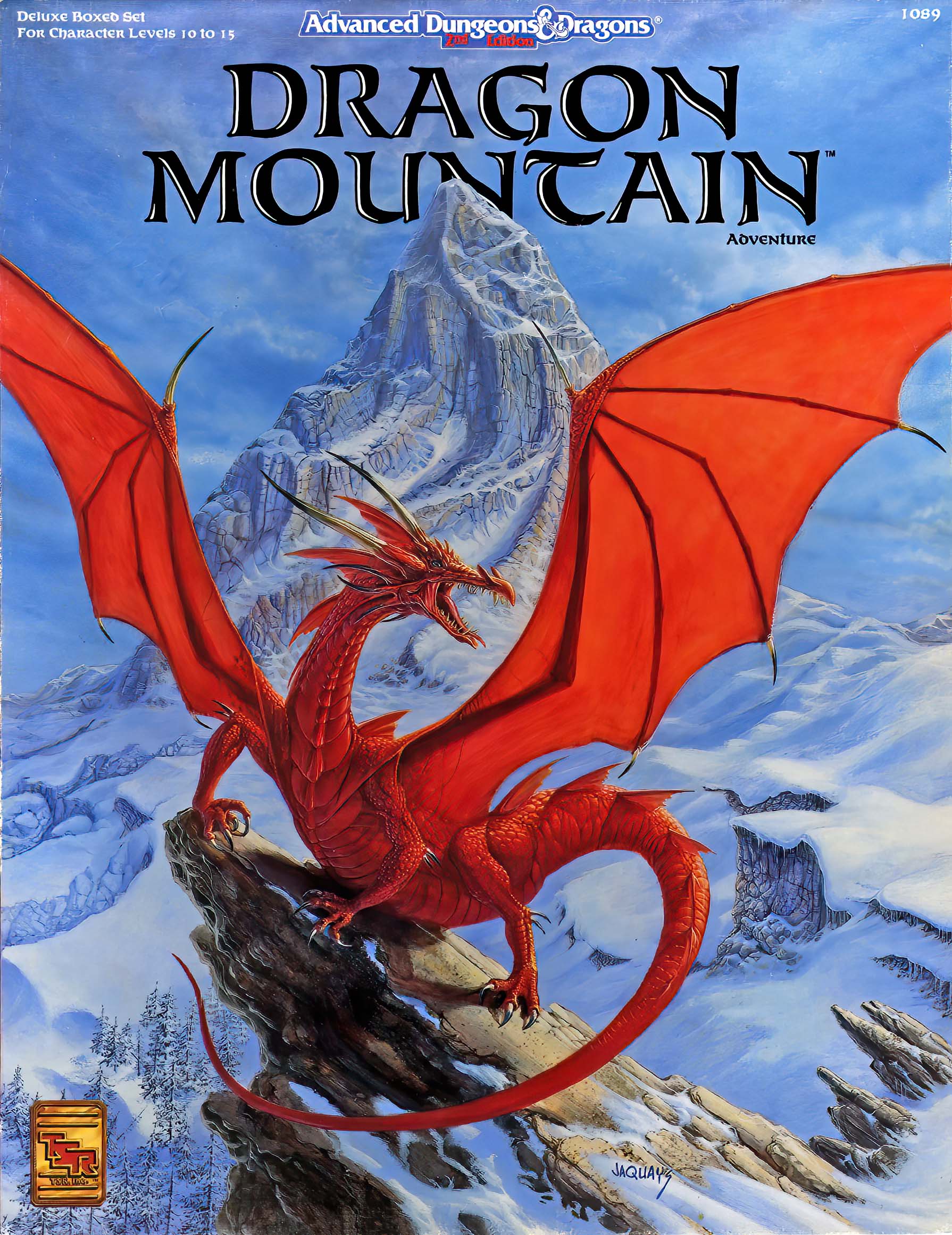
I’ve often recounted how little I knew as an illustrator when I worked on Dragon Mountain. I must also point out how little I had as well, especially with regard to materials. Therefore the color illustrations for Dragon Mountain, like the Monstrous Manual, were accomplished in leftover art school supplies: ballpoint pens, colored pencils and alcohol-based art markers (a few surviving originals seen here ) rendered on loose sheets of bond paper.
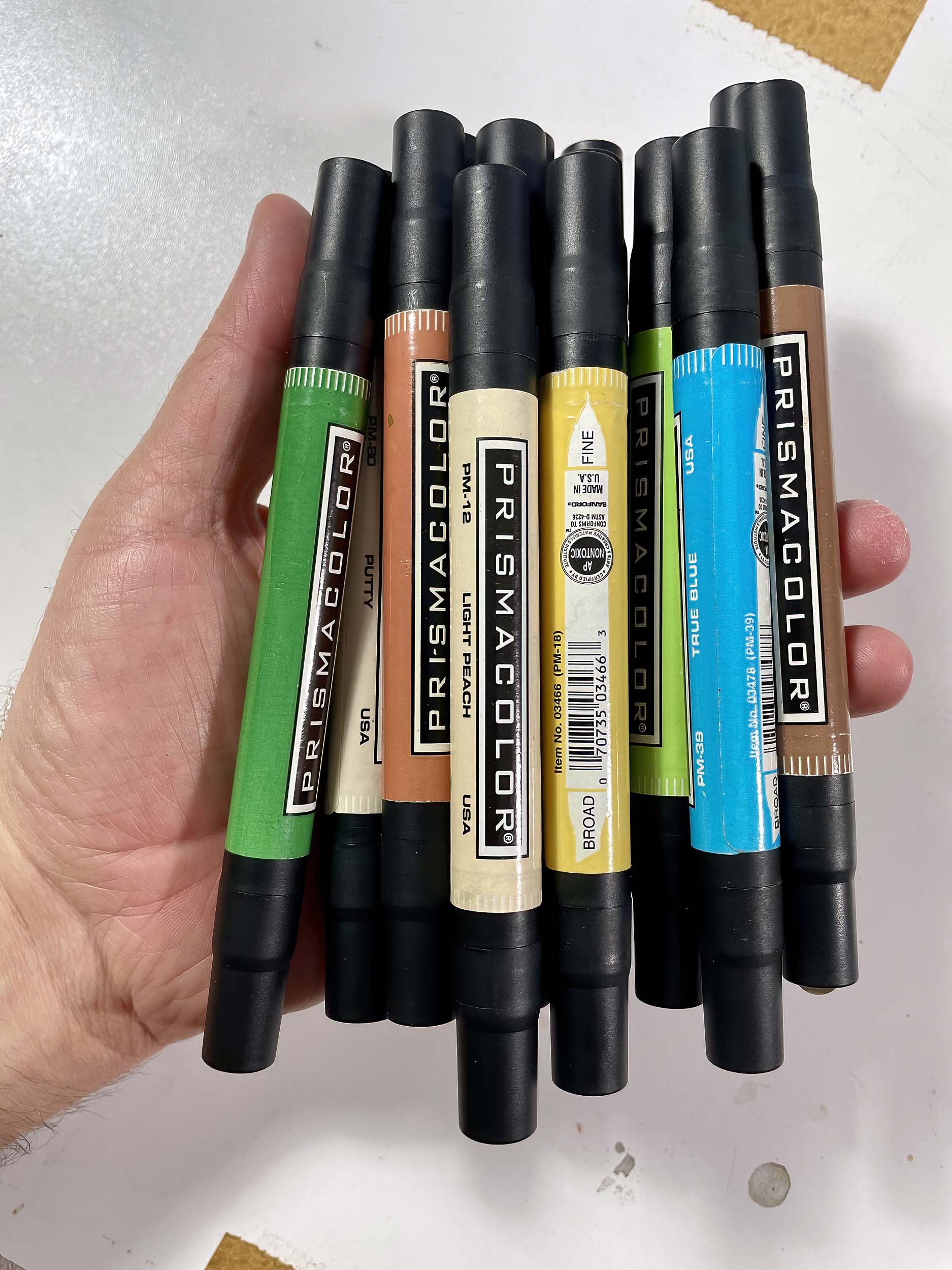
Why bond paper? Well, the thinner the paper weight, the more you can saturate it with pigment from the markers, as well as add rubbing alcohol to blend colors. You can see how the blending worked when we take a peek at the backside of the Displacer Beast:

This rendering technique was similar to what I’d done for advertisement comps and other quick color sketches during my years at art school, like this exercise in character design:

To further the blending effect, I’d fill in areas with my secret weapon: pastel pencils. Below is the set I’ve had since art school, used on the Monstrous Manual, Planescape, the Spiderwick Field Guide and The Broken Ornament.
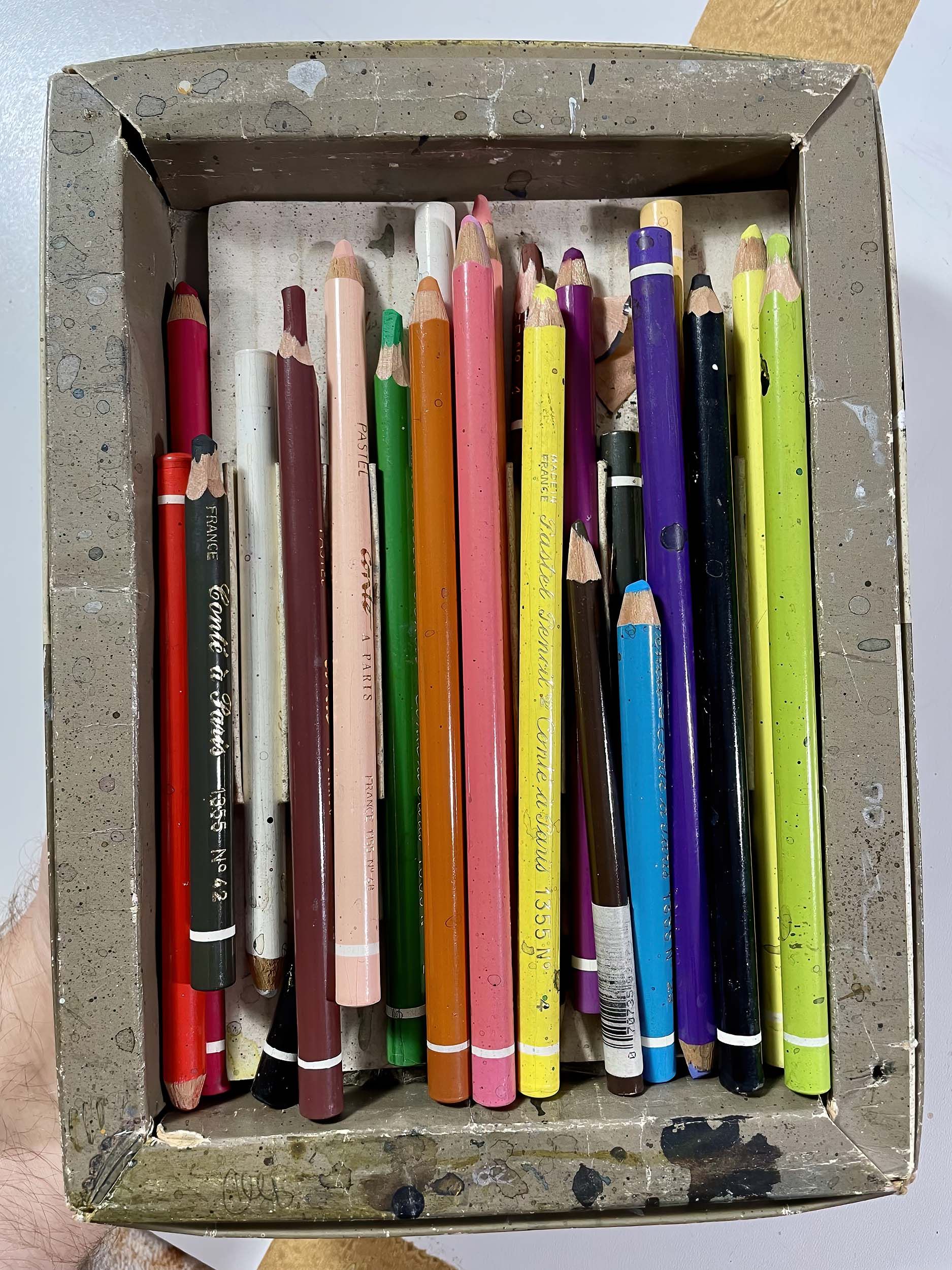
Now, TSR art director, Peggy Cooper, had not seen a whole lot of my color work. If I recall, there was only one color sample in my submission, but I used my marker technique in Dragon Mountain for the color inserts and the miniature game pieces (more on those game pieces later).
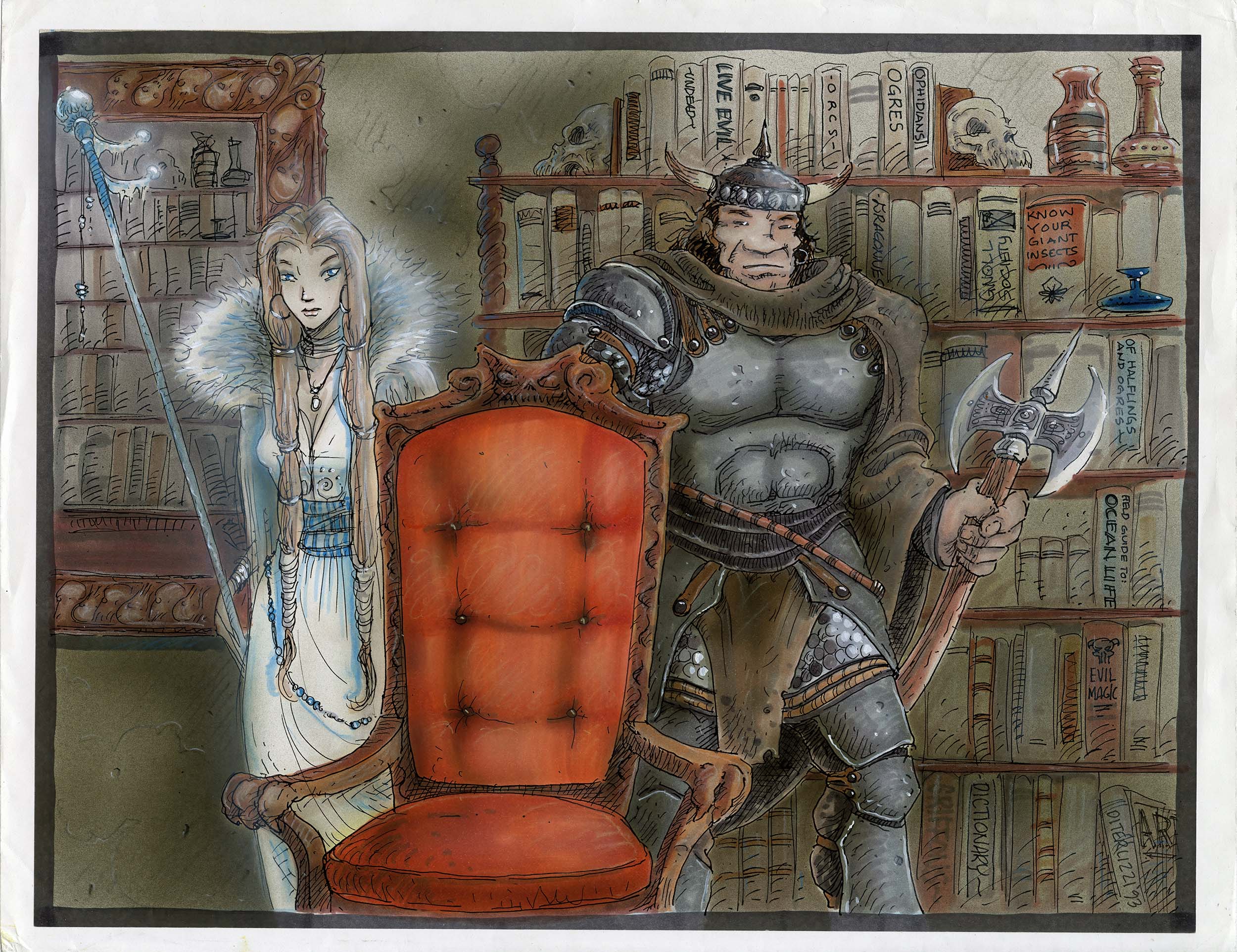
As I said, my work on Dragon Mountain was amateurish. Looking back, I was overwhelmed at the size of the job while anxiously trying to impress Peggy and the team at TSR. What I needed to do was impress myself. That self-discipline would start with the Monstrous Manual. Speaking of, it was the monsters that I’d illustrated for the Dragon Mountain monster compendium that caught the eye of TSR game designer, Tim Beach.
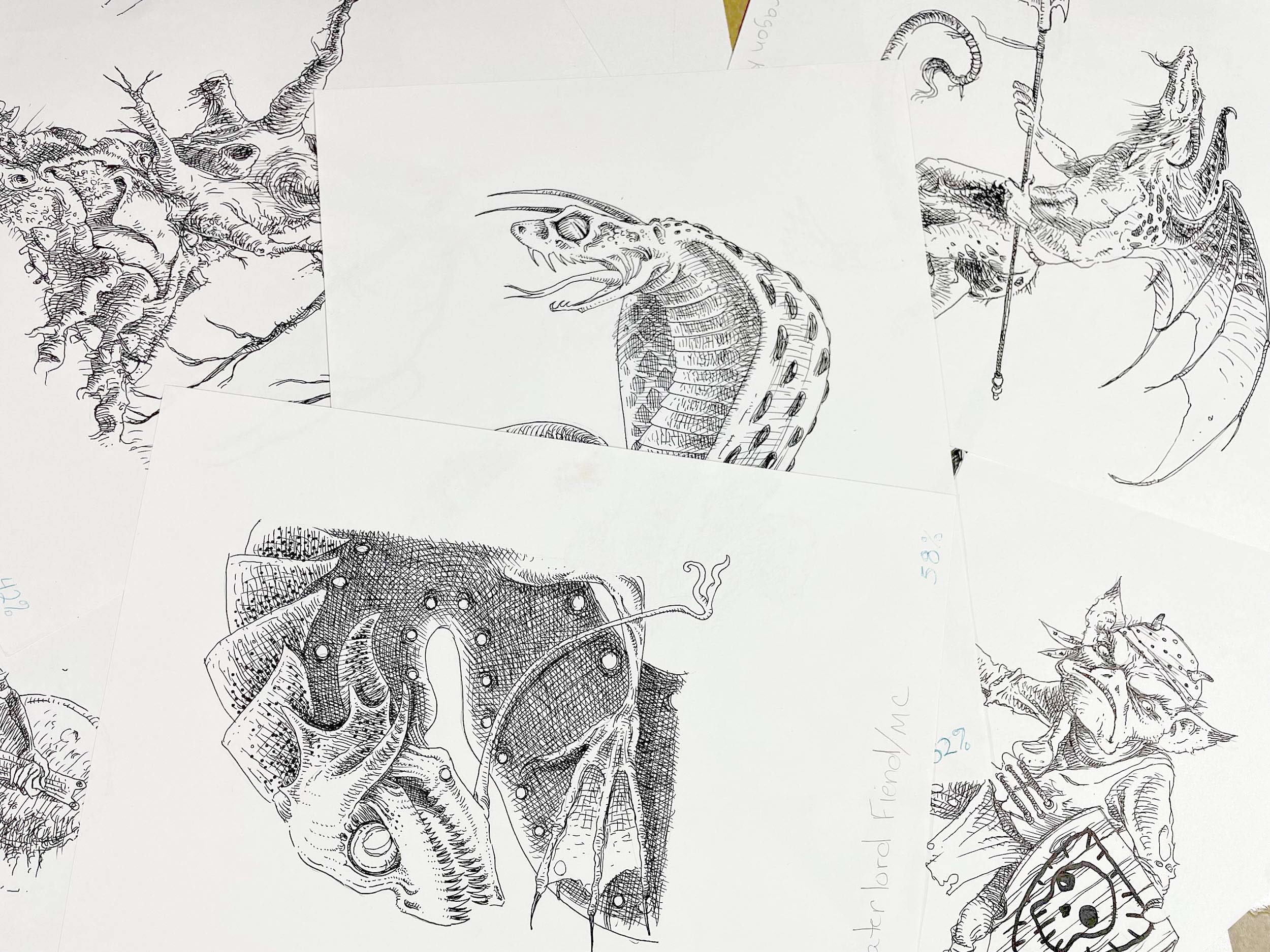
A Single Sketchbook Changes My Life
I don’t keep a journal or a diary but I have many sketchbooks that chronicle creative periods throughout my life. In April of 1992, I’d begun sketching characters and monsters from D&D that would eventually be redrawn and refined to become my first art submission to TSR. These sketches were not in a single sketchbook but, instead; drawn on sheets of paper, scraps of graph paper from gaming sessions, and even restaurant napkins. I was doodling D&D in evenings after work and on weekends during game play. I was obsessed.
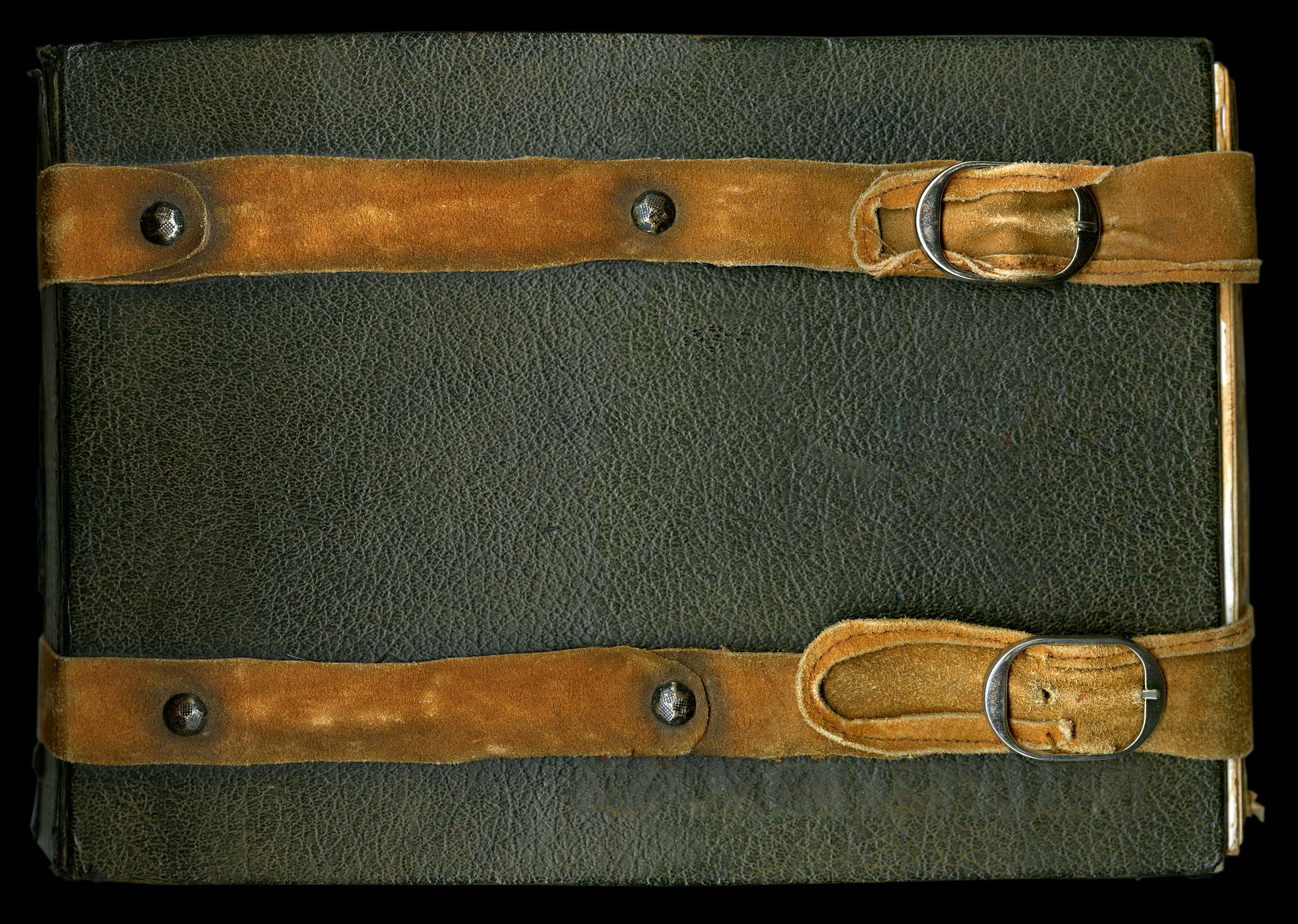
By the end of that summer, I’d collected these loose sketches and taped them into an 8.5 x 11″ horizontally-bound sketchbook. I distressed the cover and even glued strips of leather to it in an attempt to give the illusion of medieval binding (whatever that was). This became my scrapbook of preparatory sketches for D&D and was already about 1/3 full by the time I sent off my first submission to TSR late in September. While I anxiously awaited a response, I spent my free time copying text from the 1989 AD&D Monstrous Compendium to accompany my drawings. It was as if I was assembling some fantastic tome–done in the spirit of Brian Froud and Alan Lee’s Faeries–while dreaming of one day becoming an artist who worked for TSR.

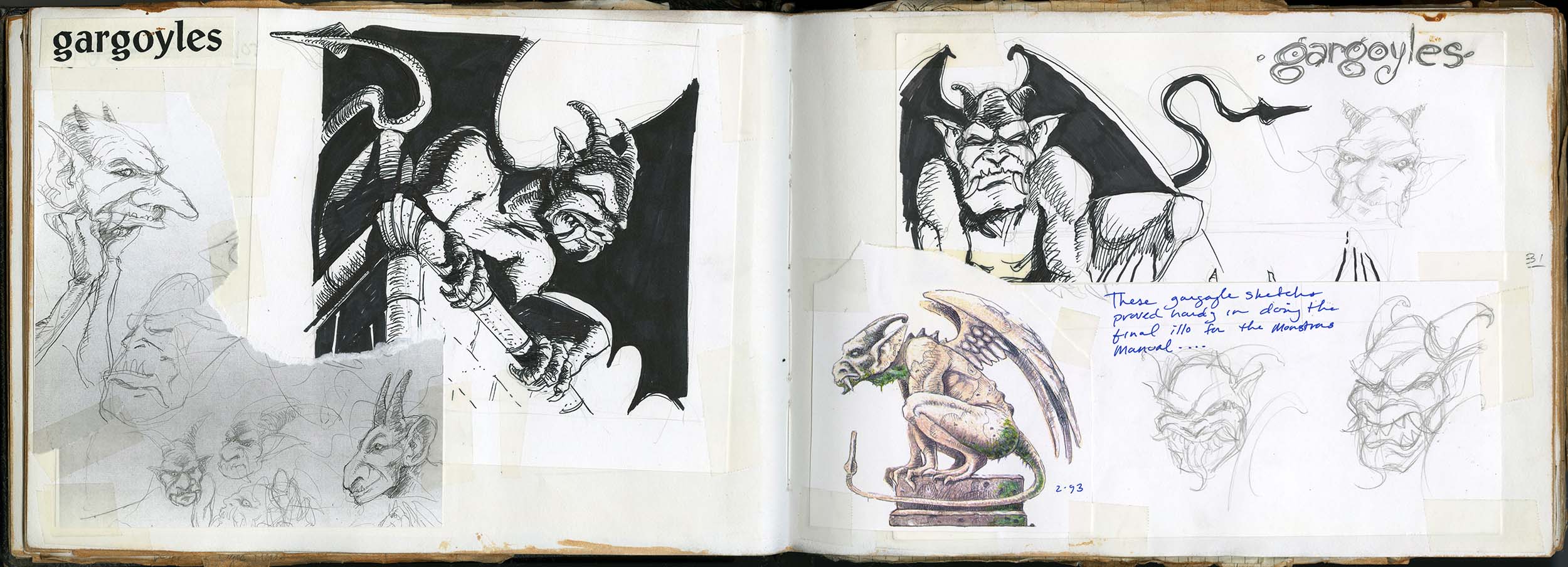

“But, wait”, you say, “There’s finished art on these spreads, right from the Monstrous Manual”. True. The following year I went back and added those color laser prints throughout to show the connection between these early sketches and the final artwork. Why? Well, because I took a crazy chance early in 1993 when that game designer I mentioned earlier, Tim Beach, gave me a call.
Do You Want to Get Paid to Draw Monsters?
Tim (below, in his office at TSR, 1993) was intrigued by my artistic approach for Dragon Mountain as well as my initial art submission. As he would later recount in the book REALMS: The Roleplaying Game Art of Tony DiTerlizzi:
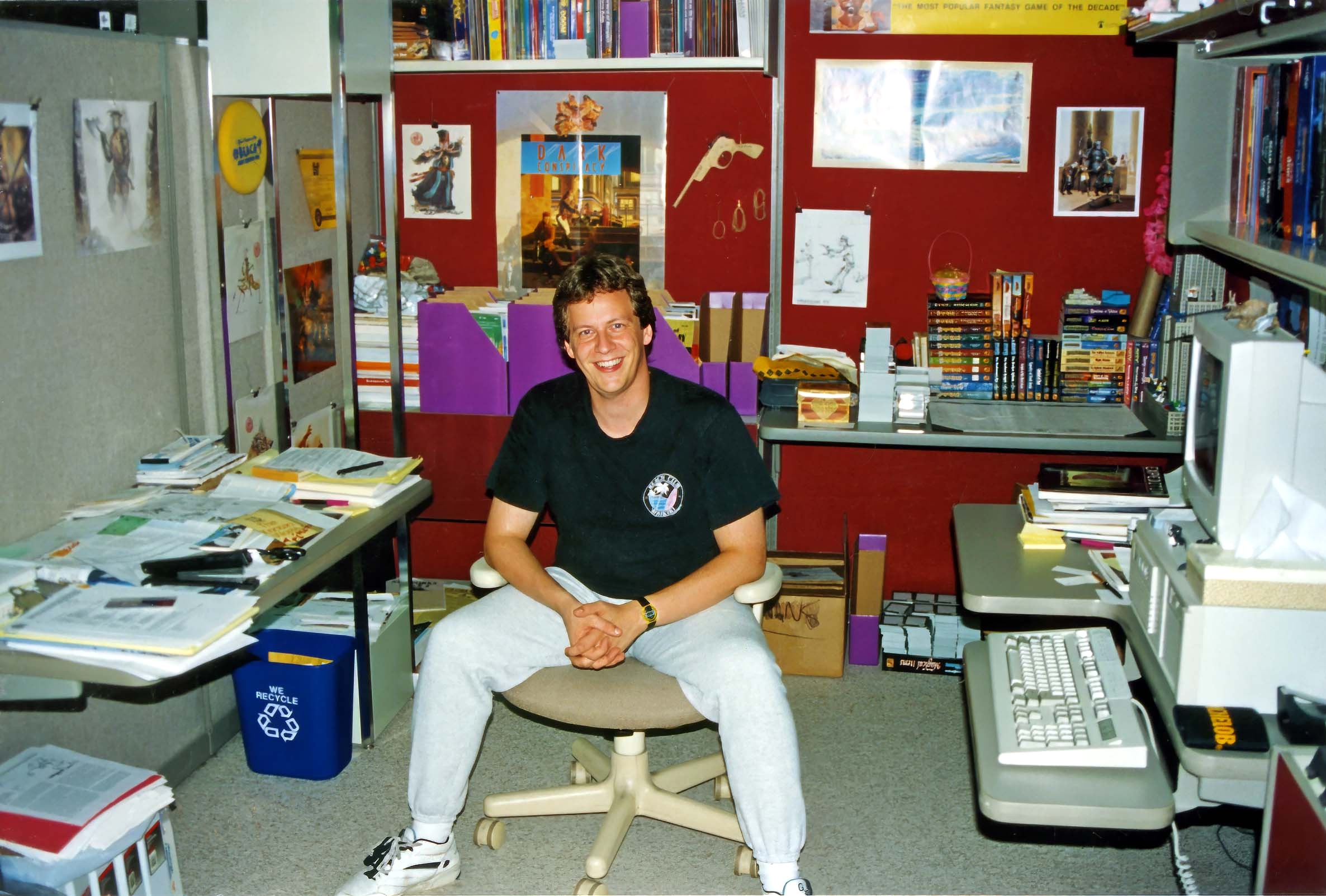
“I was coordinating efforts on the ‘AD&D 2nd Edition Monstrous Manual’ and getting ready to create an art order when TSR’s art director, Peggy Cooper, showed me a portfolio she had received from Tony. He had taken a published adventure (one I had written, coincidentally) and replaced the artwork with his own pieces to show how they would look in a finished book.
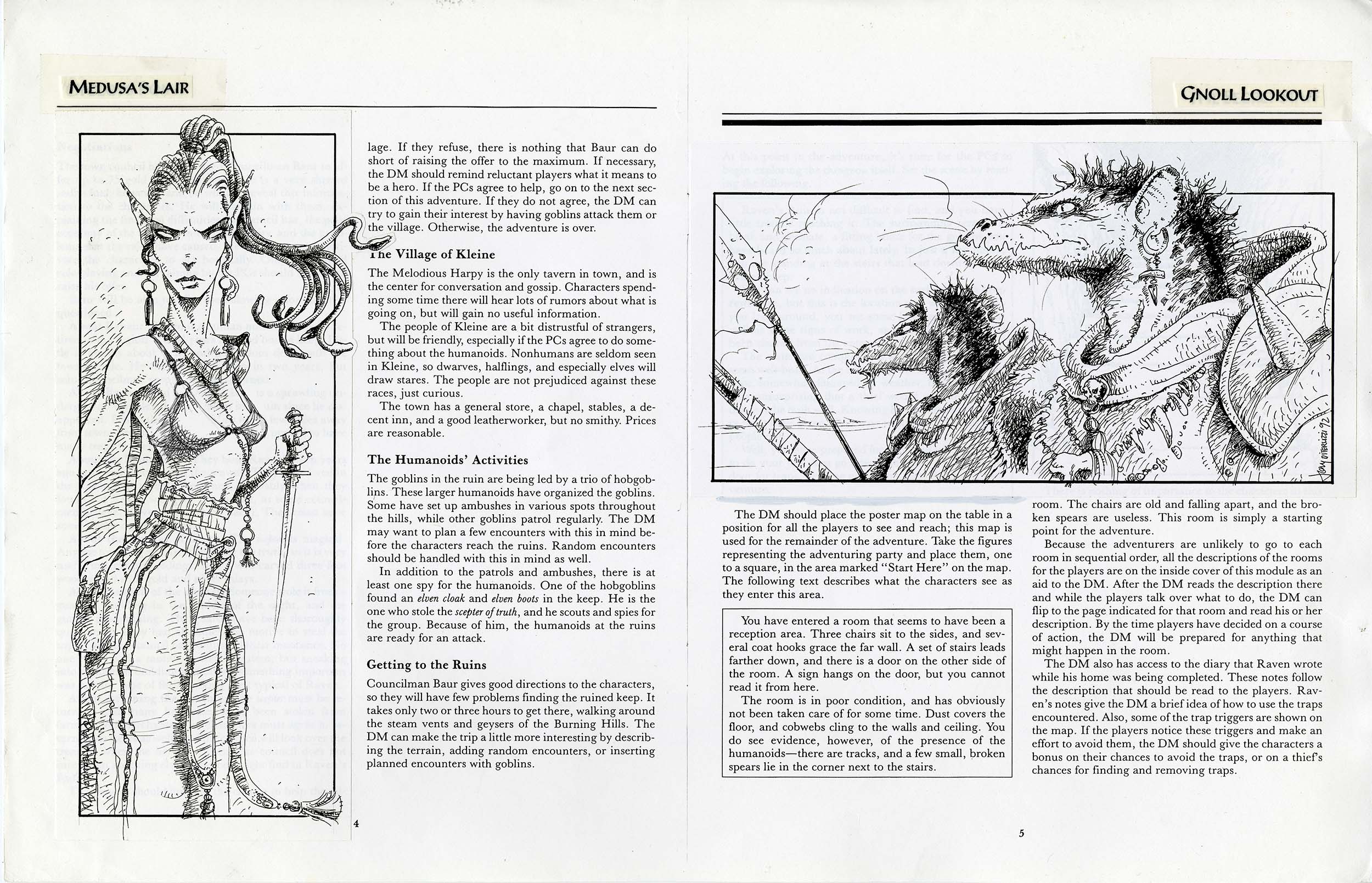
I noticed and appreciated Tony’s unusual style, but one piece in particular caught my eye: Medusa with her snakes pulled back in a ponytail–an original take on an image with literally thousands of years of history. We added Tony to the artist list, and I assigned him several monsters that I felt would benefit from his style.”
Tim asked if I’d ever drawn any other monsters from D&D beyond these samples. I promised I’d show him exactly what I’d sketched the following day. He sounded excited as we hung up, probably expecting a pile of faxes from me (it was the ’90s, after all) but instead, on his desk the next morning was my coveted D&D sketchbook.
Tim called immediately, wanting to assign the entire Monstrous Manual to me! But time was not on our side. The deadline for the book to go to press was fast approaching. On Tuesday, February 2, 1993, the day after I turned in the last pieces for Dragon Mountain, Tim ordered 100 illustrations(!) with a focus on certain monster types: humanoids, fairy-folk, lycanthropes and aberrations.
All artwork was due on March 23, 1993.
I had a A LOT of drawing to do–two finished pieces a day, to be exact. (This scenario continued into Planescape, but that’s another story.)
Tim’s Big Book of Monsters
Right before I dropped my sketchbook in a FedEx box and sent it off to Tim, I quickly numbered the pages. That way, if he wanted to refer to a certain sketch we’d both have a point of reference. Was I glad I did so.
My sketchbook returned home from TSR, packed with my contract, reference sheets (mostly from the Monstrous Compendium) and notations from Tim (see below). Using the pagination, he noted and approved sketches right out of my sketchbook, allowing me to proceed to finished art! It was a little break in what would become a marathon of illustration.
*By the way, in the photo below, a yellow strikethrough meant the sketch was completed, and a red strikethrough meant the final art was completed. This was a quick way to keep tabs on how close I was to finishing the assignment.

I was 23 years-old and getting paid to draw my favorite subject matter. I was fired up, ready to show Tim, Peggy and the whole TSR team what I could really do.
In coming posts, I will share with you some of my favorite D&D illustrations. I’ve dug up sketches, reference material, rejected artwork and much more. So join me as we journey behind the Monstrous Manual!
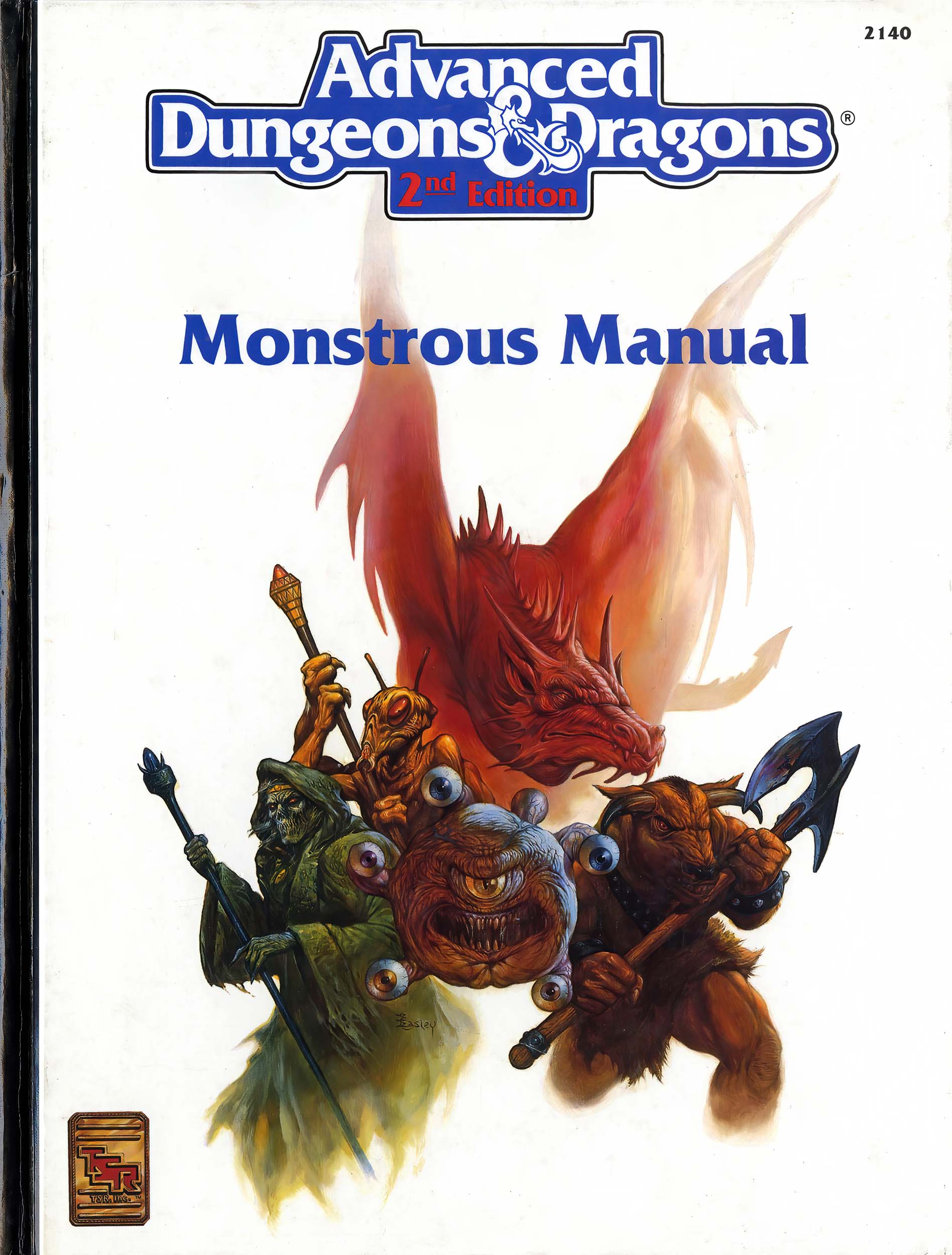
Back to main news page

 Menu
Menu Connect
Connect






















